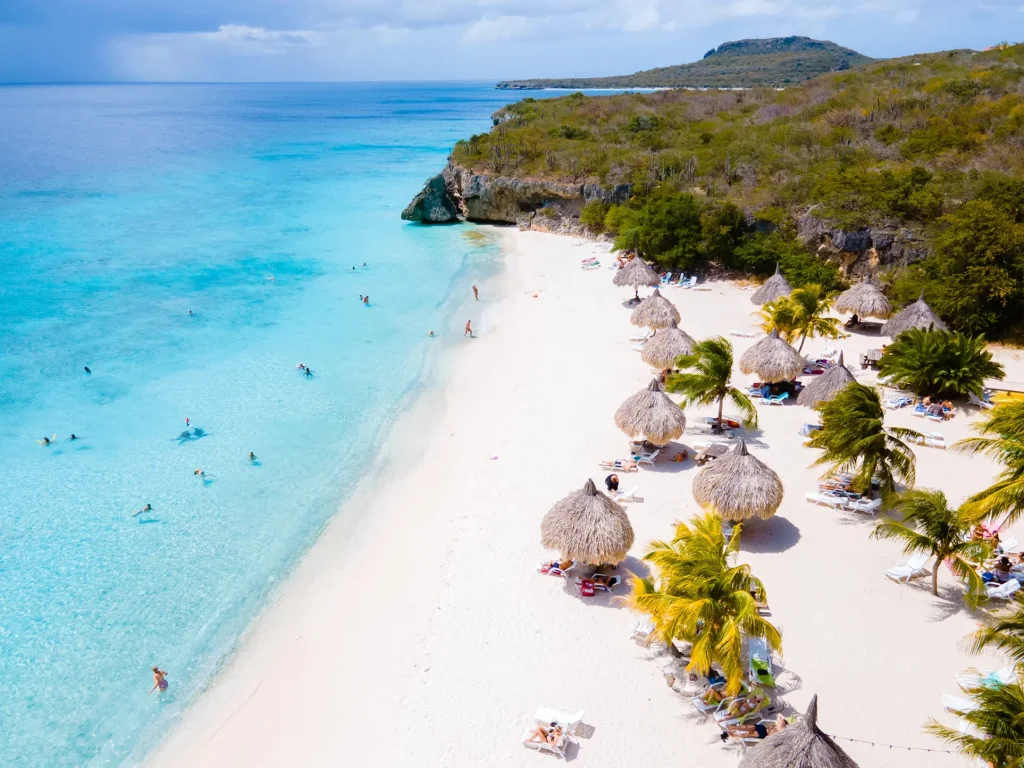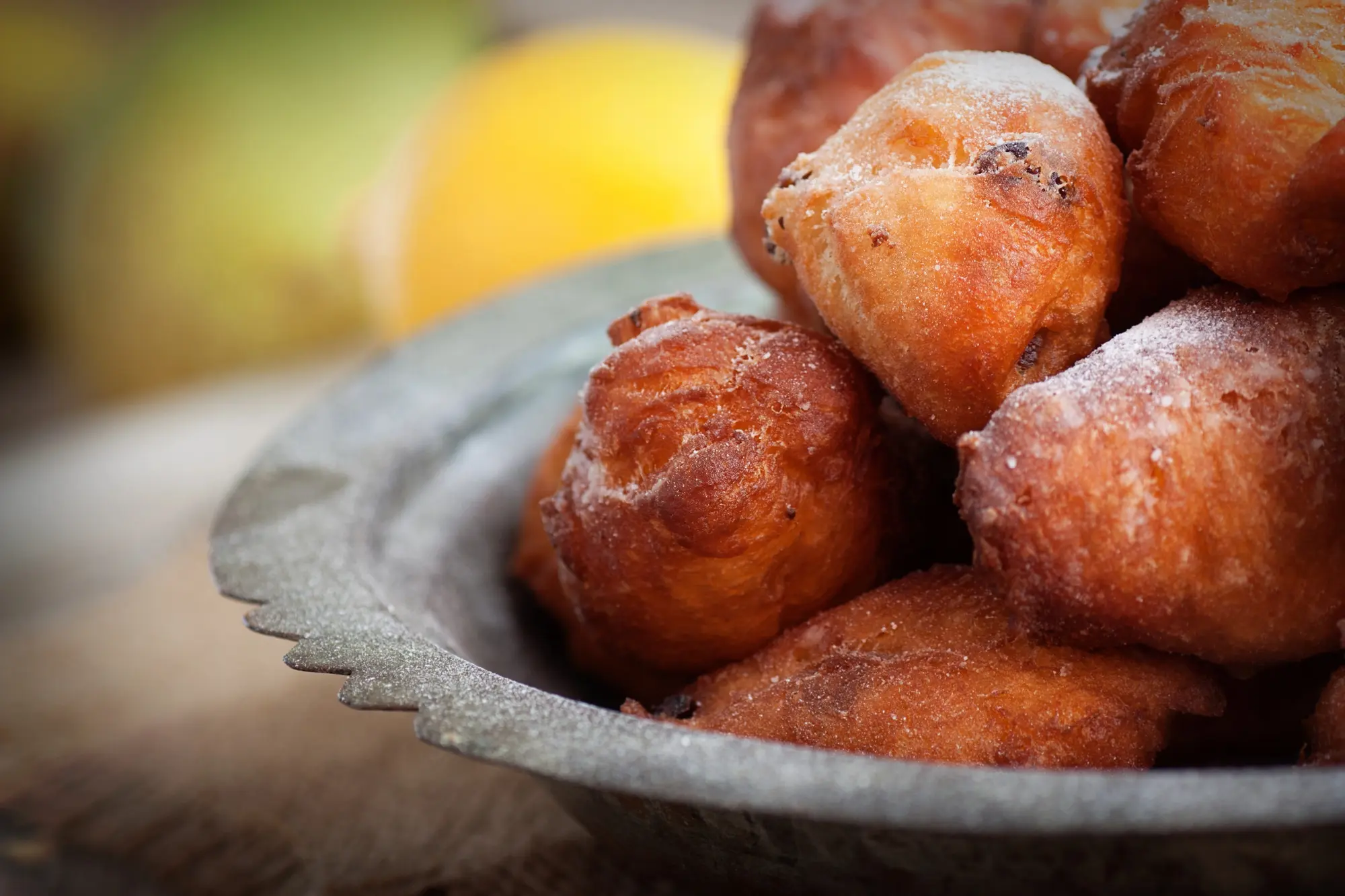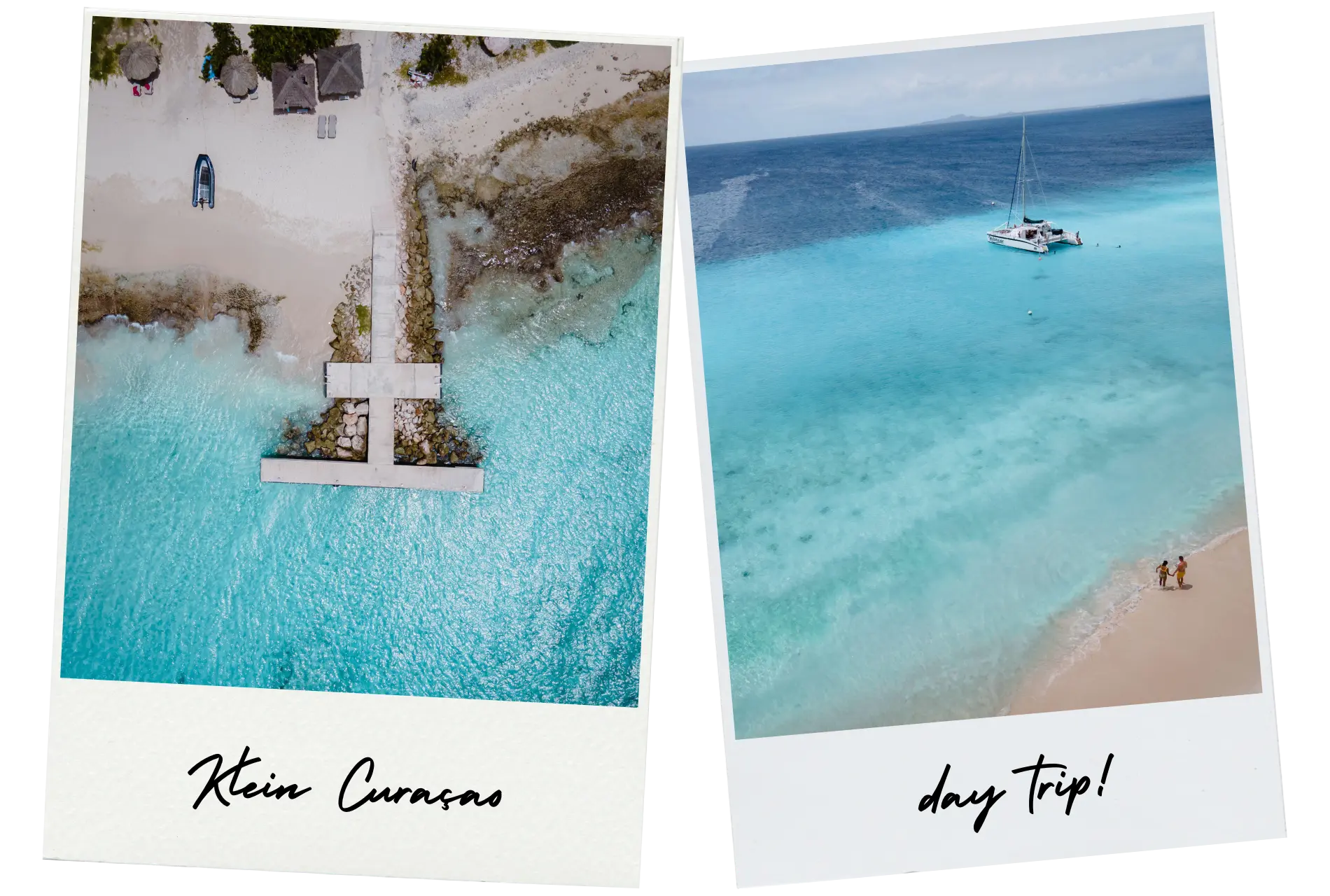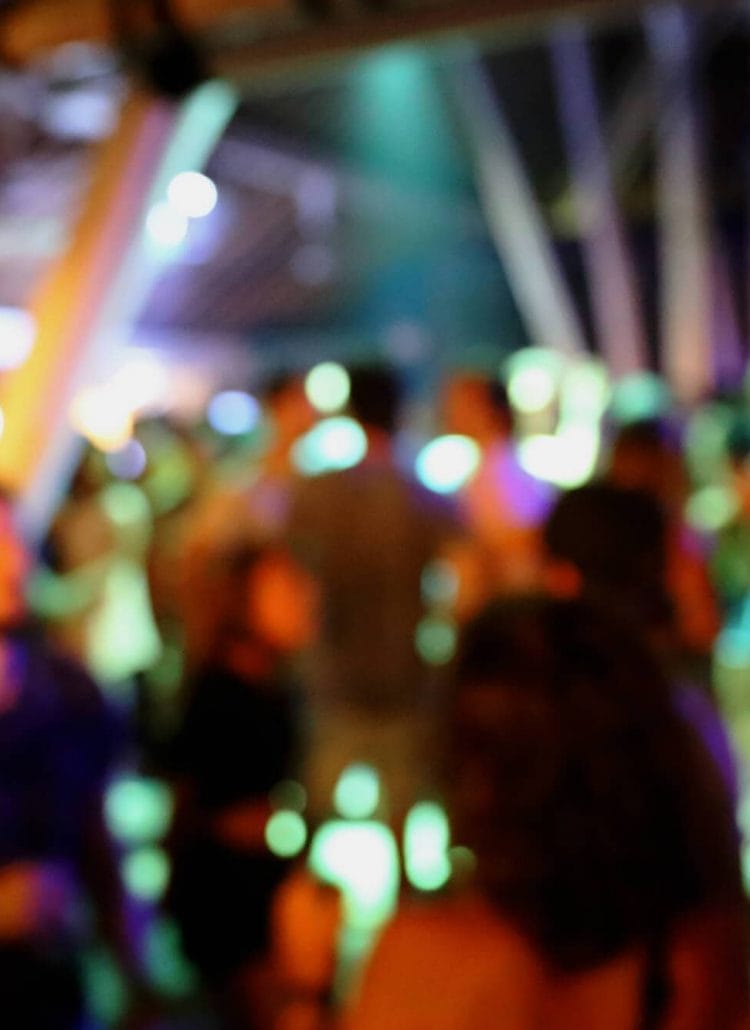Bon Bini na Curaçao — a Caribbean gem where Dutch charm blends perfectly with Afro-Caribbean soul, and the buildings are as colorful as the coral reefs.
Whether you’re a history enthusiast eager to explore colonial architecture or a foodie ready to indulge in flavorful local dishes, Curaçao has something special in store for you.
But before you pack your bags, I wanted to share a few things I wish I had known before my first visit. From understanding the culture to discovering off-the-beaten-path treasures, in this guide, I’ll give you all the tips and insights to navigating Curaçao like a seasoned pro.
So, grab your sunscreen, and let’s dive into the vibrant world of Curaçao!

🌟 LIMITED ON TIME IN CURAÇAO?
This highly-rated private full-day tour gives you the perfect taste of the island. See beaches, go snorkeling, explore caves, or focus on art and architecture. With your knowledgeable English-speaking guide, you come up with the perfect itinerary suited to your preferences.
Article overview
- What I wish I had known before visiting Curaçao
- The weather is basically perfect – All the time
- Curaçao’s culture is unique
- Try the local dishes (even the “weird” ones)
- Beach chairs aren’t free, but they’re worth every guilder
- Bring (or rent) snorkel gear – You’ll use it every day
- Don’t forget Klein Curaçao
- Google Maps doesn’t always work—Download offline maps
- Visit during New Year’s if you can
- Where to stay in Curaçao
- Final tips & thoughts
What I wish I had known before visiting Curaçao
Hi, I’m Tanya Turner, and I’ve been traveling and planning trips abroad for over 20 years. When I first booked a trip to Curaçao from my home in Canada, I thought I was heading for a typical Caribbean getaway.
To me; that meant sunny beaches, tropical drinks, and total relaxation. But, after 5+ weeks in Curaçao over two trips, I realized it’s more than just pretty colors, views and white sand (although those are great too!)
The weather is basically perfect – All the time
If you’re checking the forecast and see rain, don’t stress. Rain showers in Curaçao are usually short, warm, and over in under an hour. I found most days to be hot, sunny, and breezy. This makes it ideal for beach hopping, snorkeling, or just relaxing outdoors with a cool beverage.
The climate here is much more arid than other Caribbean islands, with loads of prickly cacti, kind of like in Fuerteventura.
One of the best things? Curaçao sits outside the hurricane belt, so it’s not affected by the wild weather other Caribbean islands sometimes face. That makes it a reliable year-round destination.
Leave the jeans, sweaters, and jackets at home – you won’t need them. Even at night, the temperatures stay warm and tropical. So just pack lightweight, breathable clothes.

Curaçao’s culture is unique
Curaçao’s culture is a beautiful blend of its history, geography, and the people who call this island home.
One of the first things that struck me was how deeply maritime history is woven into everyday life. The island has been a significant hub for international trade for centuries, and its port still plays a major role in the economy today.
In fact, Curaçao’s position along major shipping routes led to the development of its bustling capital, Willemstad, a UNESCO World Heritage Site. You’ve probably seen a photo of these beautiful pastel-colored colonial buildings.
Apparently, they used to be predominantly whitewashed. However, in 1817, Governor Albert Kikkert reportedly complained that the sun’s glare off the white buildings caused him severe headaches. So he issued a decree mandating that buildings be painted in colors.

Curaçao’s history isn’t all sunshine and sailing ships, though. Like many Caribbean islands, the legacy of the slave trade is an essential part of its story. Enslaved Africans were brought to Curaçao in large numbers to work on plantations (Landhuizen), and the island was a central point in the Dutch transatlantic slave trade.
Today, you’ll find important historical monuments and museums, like the Kura Hulanda Museum, which tell the stories of the enslaved people and their impact on the island’s culture.
The island’s unique blend of Dutch, African, and Latin influences comes through most strongly in its language and food. Papiamentu, the island’s local language, is a beautiful mix of Portuguese, Dutch, Spanish, and African languages.
It’s spoken by nearly everyone on the island, and hearing it in daily conversation adds to the feeling of being in a place that’s unlike anywhere else in the Caribbean. There are even local lessons that you can take while visiting!

Try the local dishes (even the “weird” ones)
And then there’s the food. Curaçao’s culinary scene is a rich mix of flavors from Africa, the Netherlands, and the Americas. The food here is bold, flavorful, and a true reflection of Curaçao’s multicultural heritage.
Iguana stew? Yep, it’s a thing and it’s good. So is Keshi Yena, a spiced meat-stuffed cheese dish.
If you visit in December, look for Oliebollen. These Dutch-style fried dough balls are SO addictive. My family and I love them. You can eat like a local at roadside stands or try fancier takes in restaurants.
I also got the chance to try fresh Tamarind Juice from a local farmers market – delicious!
For the best restaurants in Curaçao, I recommend checking out Number 10 for breakfast and lunch, and De Visserij Piscadera for an unpretentious seafood dinner. I also love Pasawa Box Eatery, a fun and colorful street food market.

Beach chairs aren’t free, but they’re worth every guilder
One thing that surprised me on my first visit? You’ll need to pay for beach chairs at almost every beach. This was entirely different from some other Caribbean islands I’d been to. In my personal opinion; the cost is totally worth it.
Most chair rentals are inexpensive, and you’re not just getting a place to sit. You’re supporting local businesses, getting access to shade (hello, umbrella upgrade), and often enjoying well-kept, clean facilities.
Some beaches, like Cas Abao or Playa Porto Mari, also charge a small entry fee, while others are free to enter but still rent out chairs and umbrellas. Unless you’re heading to one of the really tiny, hidden beaches, expect to pay a bit for comfort and plan for it in your beach budget.
At the more popular beaches, you’ll often find security staff in the parking lots. This adds peace of mind, but like anywhere, it’s smart to hide valuables out of sight. This would be ideally locked in your trunk.
If you’re wondering about safety on the island in general, I break it all down here: Is Curaçao Safe? (short answer: yes, but as always with a few smart precautions).

Bring (or rent) snorkel gear – You’ll use it every day
If there’s one thing I wish I had packed from day one, it’s my snorkel gear. Curaçao’s snorkeling is that good. The island is surrounded by vibrant coral reefs, calm turquoise waters, and marine life that starts just steps from the shore.
You don’t need to book a boat tour or go far out. Some of the best snorkeling spots are literally right off the beach. Beaches like Playa Lagun, Tugboat Beach, and Playa Grandi (where sea turtles often swim just offshore) are absolute must-visits for snorkel lovers.
Even popular beaches like Cas Abao and Playa Porto Mari have easy entry points and clear water with plenty to see. The coral formations, tropical fish, and occasional octopus or eel sightings are unforgettable.
If you already own a snorkel set, make sure you pack it! But if you’re packing light or traveling carry-on only, no worries. You can rent quality gear at many beaches and dive shops across the island, often for just a few guilders a day.
Whether you’re a seasoned diver or a total beginner, Curaçao’s underwater world is an experience you don’t want to miss. You can even get professionally certified on the island through PADI to scuba dive. Check out Scubacao near Tugboat Beach for more information.

Don’t forget Klein Curaçao
If you’re really into snorkeling and want a next-level experience, consider taking a day trip to Klein Curaçao. This uninhabited islet is a snorkeler’s paradise, with untouched beaches, crystal-clear waters, and some of the best snorkeling you’ll experience.
The island is a short boat ride from the main island, 1 – 2 hours depending on the boat operator you choose. Booking a day trip to Klein Curaçao typically includes transportation, breakfast, lunch, AND snorkel gear.
It’s the perfect spot to explore underwater without the crowds, and if you’re lucky, you might even spot some rays or sea turtles. And if you’re wondering where to start, check out my guide to the best snorkel spots and insider tips.

Google Maps doesn’t always work—Download offline maps
Curaçao’s signage can be spotty, and Google Maps sometimes struggles, especially on the west side of the island.
Roads may not be clearly marked, and a 10-minute drive can turn into a scenic, 30-minute detour. Before your trip, download offline maps and consider saving key spots like your hotel, favorite beaches, and grocery stores. It’ll save you a lot of frustration, and maybe even some gas.
📲 Pro tip >> If you want reliable mobile data while exploring the island, use an eSIM from Airalo. You’ll be connected in minutes without needing a physical SIM. The main operator here is called Dushi Mobile – yes, that’s really the name.
Also, locals often give directions using landmarks instead of street names, so having a visual map on hand helps.
Some of our favorite beaches didn’t even have proper signs, and we passed them a few times before realizing we’d arrived. Having a backup map made it much easier to relax, explore confidently, and avoid wasting daylight getting turned around.
Curaçao is an easy island to navigate and drive once you’ve got the right tools loaded up!

Visit during New Year’s if you can
I had no idea Curaçao went this hard for New Year’s Eve. Firework sales officially open the week before, and once they do, the island absolutely erupts – literally 🍾
The celebrations hit their peak on December 31st, but fireworks keep going nightly for weeks afterward. It’s loud, chaotic, and totally unforgettable. If you’re planning to visit over the holidays, book your accommodations early. It’s one of the most exciting (and busiest) times to be on the island.
The Dutch have their own celebrations on New Year’s Day. A dip in the Caribbean Ocean is much more pleasant than the North Sea!

Where to stay in Curaçao
Curaçao may be a small island, but where you stay can totally shape your experience. Here are my two favorite areas.
West side
The west side of the island, especially Westpunt, is where you’ll find the most breathtaking beaches, quiet coves, and incredible snorkeling spots just a short drive away.
I really like Botanique Bungalows Westpunt, a light and bright property with charming bungalows. From here you can even walk to several beaches.
My family and I stayed on this part of the island during one of our trips, and it was the perfect base for peaceful mornings, crystal-clear water, and afternoons spent spotting sea turtles and octopi right from the shore.
That said, the west is more remote. You won’t find major grocery stores or large resorts out there, so if you’re planning to self-cater in a vacation rental, stock up on essentials before you head out.
🚘 But it only works best if you rent a car (I recommend booking a car as far in advance as possible).
Jan Thiel (south of Willemstad)
On another visit, we stayed in the Jan Thiel area, which is more developed and has everything from beach clubs and restaurants to gyms and well-stocked supermarkets.
Jan Thiel is a great choice if you want modern amenities and a social, family-friendly atmosphere. The area offers a wide range of self-catering vacation rentals from Airbnb and VRBO. These are the most popular types of accommodation in Curaçao.
There is also a great selection of fantastic hotels with beach access, pools, and activities for kids and adults like the Papagayo Beach Resort which has that true Caribbean vibe.
Curaçao isn’t really an all-inclusive island. While a few exist, they often receive mixed reviews. Instead, I recommend looking for hotels that offer half-board options. This gives you the flexibility to try local spots for lunch or dinner while still enjoying the convenience of on-site meals.
Curious about the best places to stay? I’ve broken down all the pros and cons and shared some of my favorite hotel picks in this guide to where to stay in Curaçao.

Final tips & thoughts
💵 What is the currency in Curaçao?
Curaçao now uses the Caribbean guilder, which replaced the Netherlands Antillean guilder on March 31, 2025. While U.S. dollars are still widely accepted in many tourist areas, I recommend you carry some local currency for smaller purchases or in more remote locations.
🛂 What are the entry requirements?
Most nationalities do not require a visa but always check. Remember to complete a Digital Immigration Card (DI card) within 7 days before departure.
👨👩👦👦 Is Curaçao good for families, couples, or solo travelers?
All of the above. It’s incredibly safe, full of outdoor activities, and has options for every budget and travel style.
🪙 Should I tip in Curaçao?
Tipping is customary in Curaçao, though not mandatory. Many restaurants include a 10% service charge in the bill, so additional tipping is at your discretion.
In other services like taxis or hotel staff, rounding up the fare or leaving a small cash tip is common practice.
💧 Can I drink the water in Curaçao?
Yes! Tap water is safe to drink and actually some of the cleanest in the Caribbean. My family and I love the tap water in Curaçao.
🗣 Is English widely spoken?
Yes, it is. Along with Dutch, Spanish, and Papiamentu. Most locals speak at least two of these fluently.
After spending more than 30 days on the island, I still find new things to love every time I visit Curaçao. It’s not your average Caribbean vacation; it’s so much better!
I hope these tips help you avoid the rookie mistakes I made and enjoy all the amazing parts of this unique island from day one.
READY TO BOOK YOUR CURAÇAO VACAY?
🚘 Curaçao car rental: I use Discover Cars
🛥 Best boat tour: Klein Curaçau full-day boat trip
🎫 Best guided tour: Private Curaçao highlights tour
🛌 Incredible bungalows on the west coast: Botanique Bungalows Westpunt
🏨 Beach hotel close to Willemstad: Papagayo Beach Resort
📲 Don’t forget an e-SIM: I use Airalo










Leave a Reply